Rational:
This unit is designed as an introductory art foundations course, where students will be encouraged to reflect on how their belonging can be expressed and explored through perspective art. Adolescence is a time of great change, social exploration and identity formation in youth. Students at this time are exploring who they are and gaining a sense of belonging. This unit is designed to work with students to encourage greater inquiry into their identity through the materials and processes of art. Through the introduction of various artists and their work, Stuents will be encouraged to draw ties between themselves and their surroundings, and to creatively work with materials to explore and express themselves in a broad range of ways.
Scope & sequence:
As a foundational art class, Students will be beginning with the concept of perspective and its application in art as it relating to line, texture, form, space, value and tone scale.
| Lesson 1 | Lesson 2 + 3 | Lesson 4 |
| Perspective & Illusion | Composition of Perspective | One-point perspective cube drawing |
| Lesson 5+6 | Lesson 7 | Lesson 8-11 |
| Gray scale, shading skills | One-point perspective room drawing | May take longer time to finish final project on room drawing with shading…+self/group critical |
Inquiry Questions:
- How has the illusion been created?
- How does the artist convey their perspective through their art? How does influence the viewer?
- How does this art represent ourselves and the world we know?
- How does what we create represent or express who we are?
- How can we learn more about ourselves through our art?
Unit Objectives
Through idea development and perspective techniques, students will be able to design and draw the interior of a room as the final project that represents their self-belonging and self-identity.
- To introduce students to a range of contemporary and historic artists (aboriginal/Chinese/female artists), art practices and art works.
- To introduce artistic vocabulary of materials and foundational elements of art techniques such as line, shape, texture, shading and tone.
PLO (Prescribed learning outcomes)
- use vocabulary related to 2-D and 3-D art forms and image development
- Explore relationships between identity, place, culture, society, and belonging through arts activities and experiences
- To demonstrate their understanding of perspective by drawing in one-point perspective with artistic skills
- analyze a variety of image-development techniques and design strategies as used by a variety of artists for a variety of purposes
- demonstrate an awareness of the meanings and purposes of images within a variety of contexts
- analyze and critique selected works and students’ works
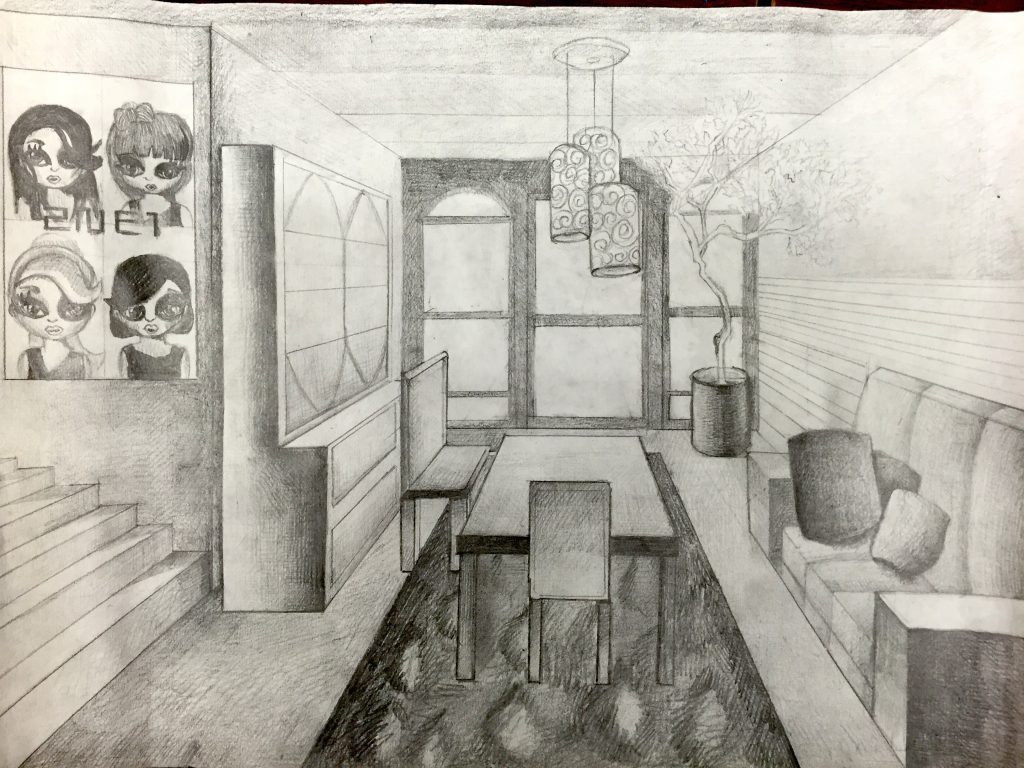
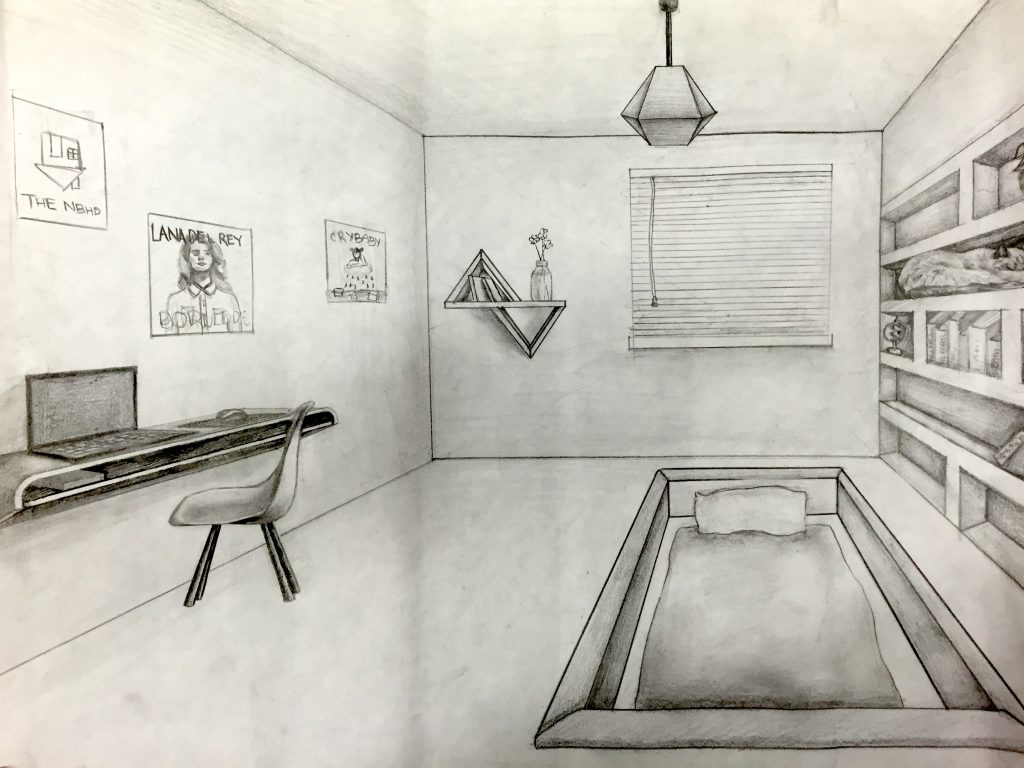
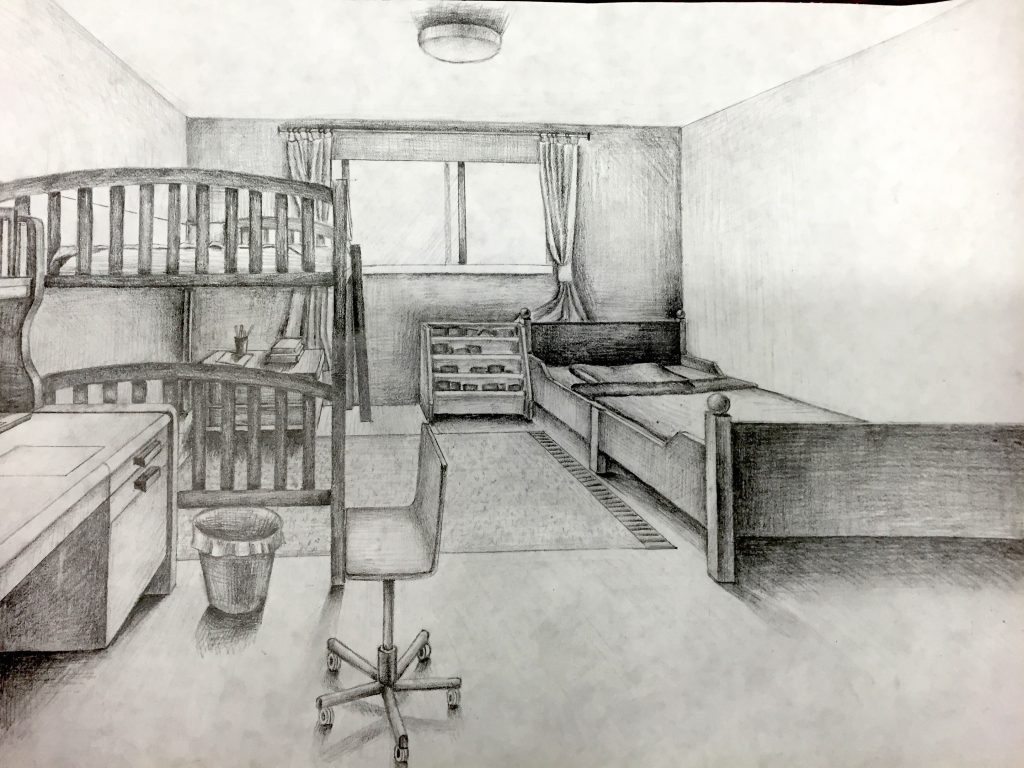
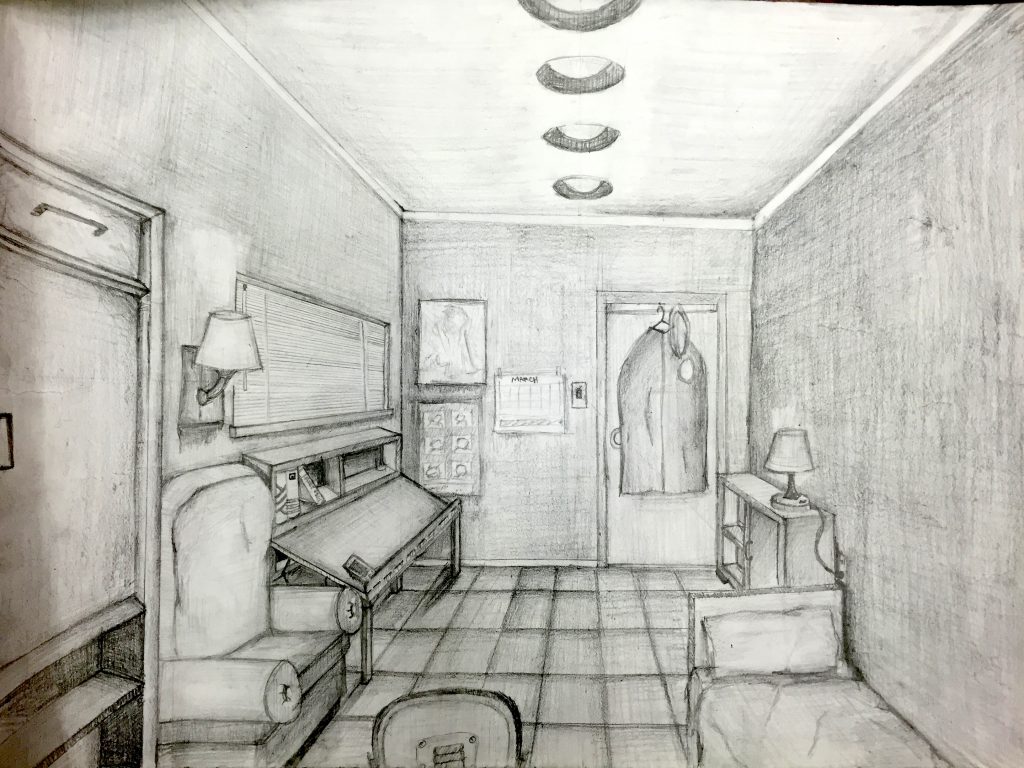
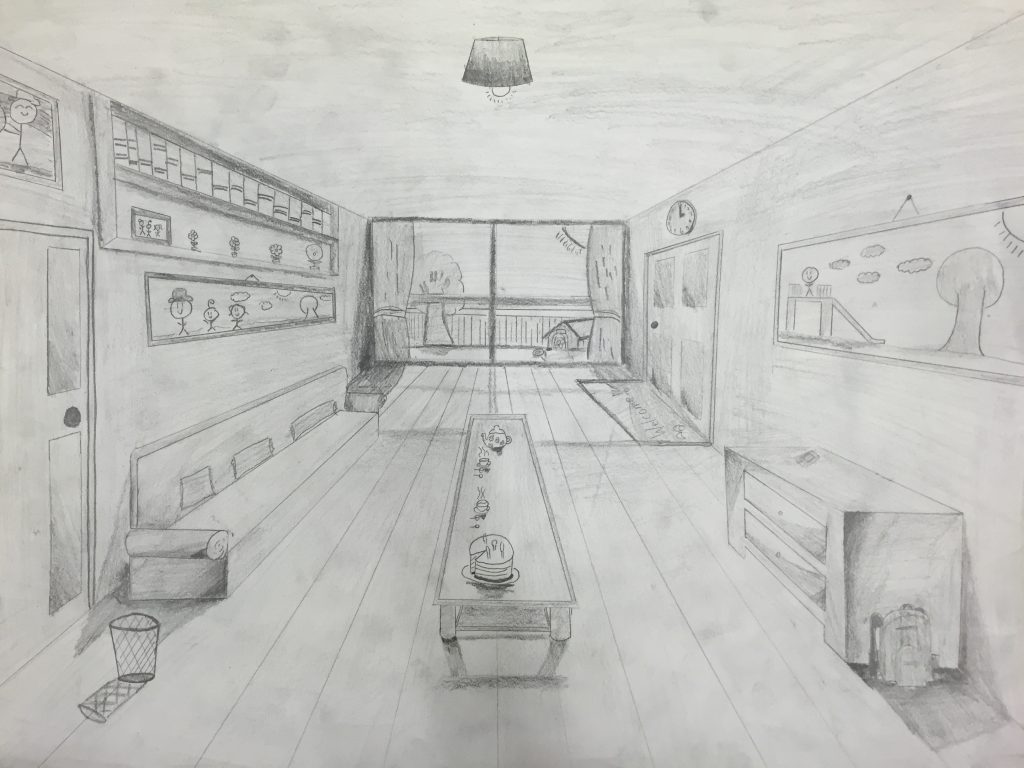
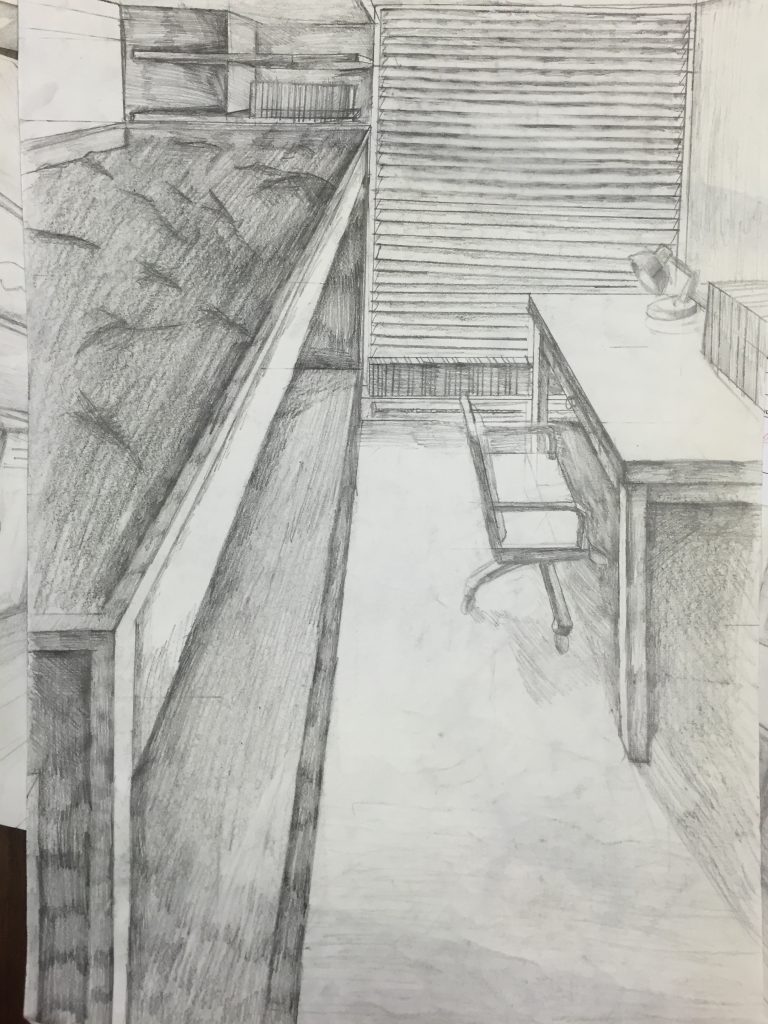
 Follow
Follow